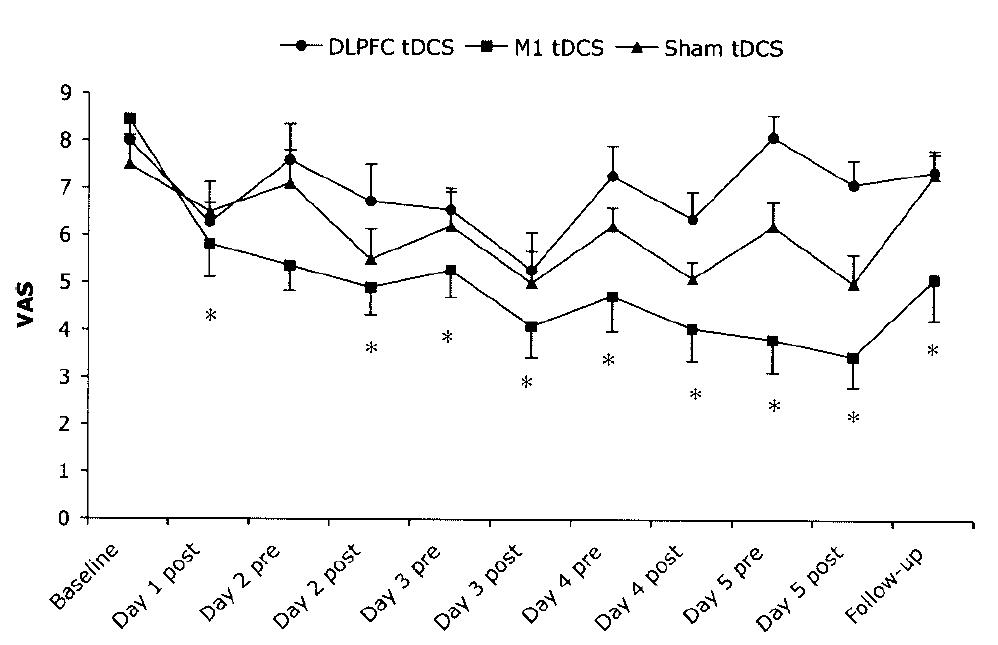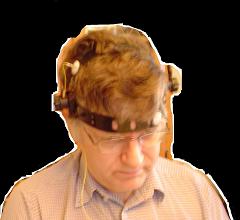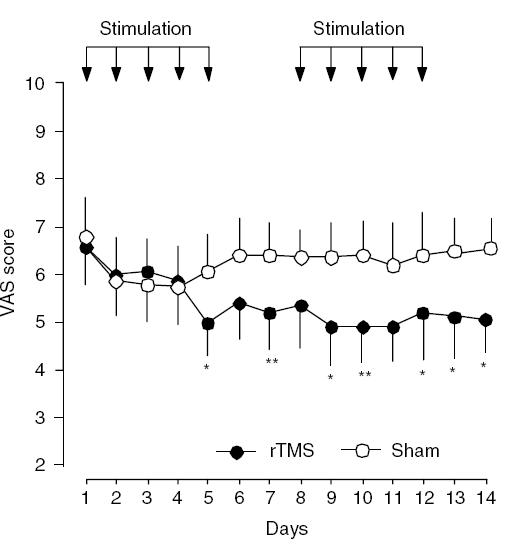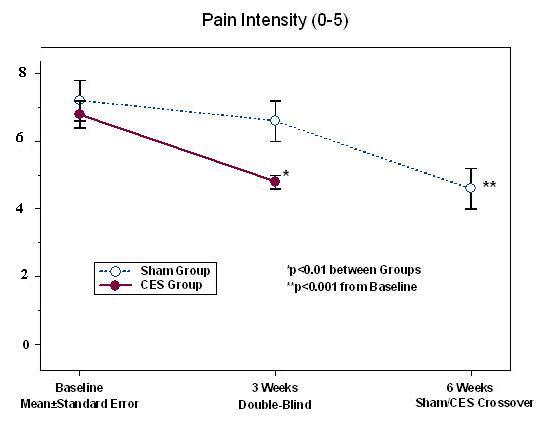Apparently 60-70% of spinal cord sufferers are in pain and 1/3 of these severely. This sort of pain can be very difficult to treat. Yet DC current – enough to be gotten from a nine volt battery could significantly help
Fregni F et al. (2006) A sham-controlled, phase II trial of transcranial direct current stimulation for the treatment of central pain in traumatic spinal cord injury. Pain 122: 197–209
Treatment consisted of giving 2 ma stimulation to skin over primary motor cortex for 20 minutes on 5 days.
The mean VAS score in the intervention group fell from 6.2/10 to 2.6/10 while the control group had no drop. 4/11 responders were still good 14 days later with a VAS 3.9/10. The anode (+) was placed at C3 or C4, and the cathode (-) put on the contralateral supraorbital area. C3 and C4 are half way from ear to vertex on left and right sides respectively.
Well, before you get out a nine volt battery, there are a couple things to consider:
1) Although safe in a controlled environment, there is always someone stupid enough to do them selves in with a nine volt battery:
http://www.darwinawards.com/darwin/darwin1999-50.html
Saline pads are used and a good connection is more difficult than one would think. I used “headgear” from princess auto as surplus harness for welding helmet parts and attach electrodes to it. The elctrodes in question are 1 cm diameter plastic screws with a hollowed out center where electrode and moist cotton batting reside:

http://patft1.uspto.gov/netacgi/nph-Parser?patentnumber=6574513
You can buy that stuff off brainmaster’s site:
http://store.brainmaster.com/browse.cfm/2,1.html
With the plastic screw device from brainmaster, you use a wadding type cotton and a gold tipped electrolyte all that fits inside the plastic screw.
I have tried headgear – saline pads to c3 – contralateral supraorbital.

Using a nine volt battery, a milliammeter, a megaohm potentiometer, you can get up to 2 milliamps. It stings. Here are results as drop Visual Analog Scale(VAS).(Under 4 you can probably start ignoring the pain.):

Two different areas were stimulated – the Dorsolateral prefrontal cortex (DLPFC- one’s happy place) or the Motor Cortex (M1) and compared to sham.
Head gear appearance:
There are several studies demonstrating hyperreactivity occurs in the motor cortex with this stim so the impact is real.
There is a good resource for spinal cord pain treatment (some dated) at :
http://www.iasp-pain.org/PCU01-2.html
Adddendum:
A treatment for Fibromyalgia has been done involving brain stimulation
Vigorous Brain stimulation can be achieved with rTMS – a $40 thousand dollar machine. You find what strength will cause your thumb to twitch when applied to its motor cortex and use 80% that strength of magnetic pulses – 8 one second pulses with 52 second in between for the machine to cool down – for 25 minutes.
Brain 2007 130(10):2661-2670
Effects of unilateral repetitive transcranial magnetic stimulation of the motor cortex on chronic widespread pain in fibromyalgia
A. Passard1, N. Attal1, R. Benadhira2, L. Brasseur1, G. Saba2, P. Sichere3, S. Perrot4, D. Januel2 and D. Bouhassira1
Each rTMS lasted 25 minutes and was given on 10/14 days. results were as follows:

Earlobe “cranial stimulation”:
A commercial product uses .2 milliamps and pulses of one per 2 seconds (0.5 Hertz) given to ear earlobe. It is used 1 hour/day. ( I have converted their results to a 10 point scale like above ones)
Written up:
Randall C. Cork, Patrick Wood, Norbert Ming, Clifton Shepherd, James Eddy, Larry Price: The Effect of Cranial Electrotherapy Stimulation (CES) on Pain Associated with Fibromyalgia. The Internet Journal of Anesthesiology. 2004. Volume 8 Number 2.
CES appears to have anti-anxiety effects, which partially might explain why Lyrica is helpful in Fibromyaglia.
Stress Medicine
Volume 13, Issue 1 , Pages 31 – 42; 28 Apr 1999
CRANIAL ELECTROTHERAPY STIMULATION (CES) IN THE TREATMENT OF ANXIETY AND OTHER STRESS-RELATED DISORDERS: A REVIEW OF CONTROLLED CLINICAL TRIALS
EUGENE A. DE FELICE
| Abstract |
| This CES review covers published and to be published clinical trials in the English language and reported to be controlled in some fashion and completed from January 1963 to January 1996. Cranial electrotherapy stimulation (CES) is defined as the application of low-level pulsed electrical current through skin surface electrodes on the head for the treatment of anxiety and other stress-related disorders. A total of 34 controlled clinical trials concerning the efficacy of CES in the treatment of anxiety and other stress-related disorders were evaluated. Overall the results suggest that CES may be capable of producing significant (p<0.05) benefit in the short-term symptomatic relief of anxiety and other stress-related disorders. CES may be effective alone and as an adjunct to other conservative measures of treatment. The primary mechanism of action of CES appears to be a direct effect on the brain followed by secondary responses. While adverse effects were reported to occur in less than 3 per cent of patients, it is believed they are substantially underreported. The short- and long-term efficacy, adverse effects, safety and mechanism of action of CES remain to be established in rigorous, well-controlled clinical trials. Results reported in this review suggest that CES warrants further study |
A review of CES is here
Comparing is difficult; The first one high “dose” cranial stim is for spinal damage pain. It was given 5 days and resulted in decrease from VAS of 8/10 to 5/10. rTSM was given for Fibromyalgia for 10/14 days and dropped pain from 7/10 to 5/10. Ear CES was given for 1 hour daily for 3 weeks for Fibromyalgia and decreased pain from 7/10 to 5/10 (comparible units). I am not convinced the 40 K rTSM is at all superior.
I would be interested in experience with these techniques.

